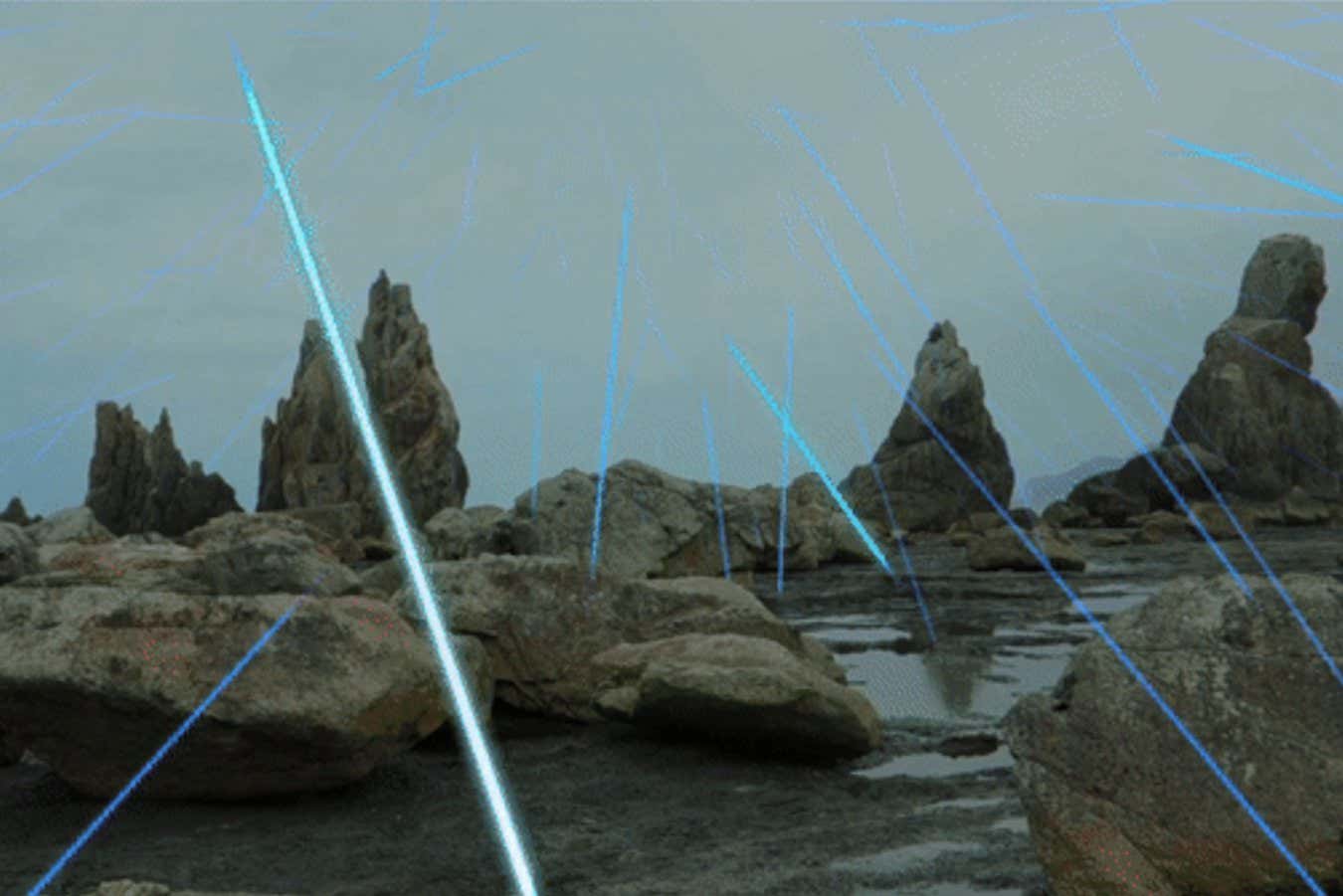An artist’s impression of muons, created by cosmic rays, showering Earth
Hiroyuki K.M. Tanaka/University of Tokyo
A navigation system based on high-energy particles created by cosmic rays has been successfully tested underground for the first time. The technology could one day be used to guide underground and underwater robots, and even aid search and rescue efforts in collapsed mines or buildings.
Existing navigation tools like GPS use radio waves to triangulate a position, but these signals tend to be absorbed or reflected by water or thick rock. “That’s why it’s difficult to use GPS in indoor or underground environments,” says Hiroyuki Tanaka at the University of Tokyo, Japan.
To get around this problem, researchers have turned to particles called muons, which are created when cosmic rays collide with particles in Earth’s atmosphere and can pass through water and rock unaffected. For example, the US Navy has investigated using a muometric position system, or MuPS, that utilises the properties of muons to navigate underground and underwater.
Advertisement
Now, Tanaka and his colleagues have developed a wireless version of the technology, dubbed the muometric wireless navigation system (MuWNS).
In the first real-world test of MuWNS, researchers placed four reference detectors on a building’s sixth floor, while someone walked with a receiver detector around the basement. Similar to how a GPS works, the system calculated the location of the person in the basement using the time taken for the muons to pass between the reference detectors and the receiver detector in the basement, as well as their angle.
The team found that MuWNS could track the person in the basement with an accuracy of between 2 to 25 metres, which is comparable to GPS. That is enough to make the system useful for providing navigation to vehicles in tunnels or perhaps one day to find survivors in rubble after earthquakes or cyclones, says Tanaka.
“It is intriguing to see muons being used in a prototype positioning system which claims quite a high accuracy,” says Stephen Blundell at the University of Oxford. “This new technique could find applications in certain specialised environments.”
Topics:
































